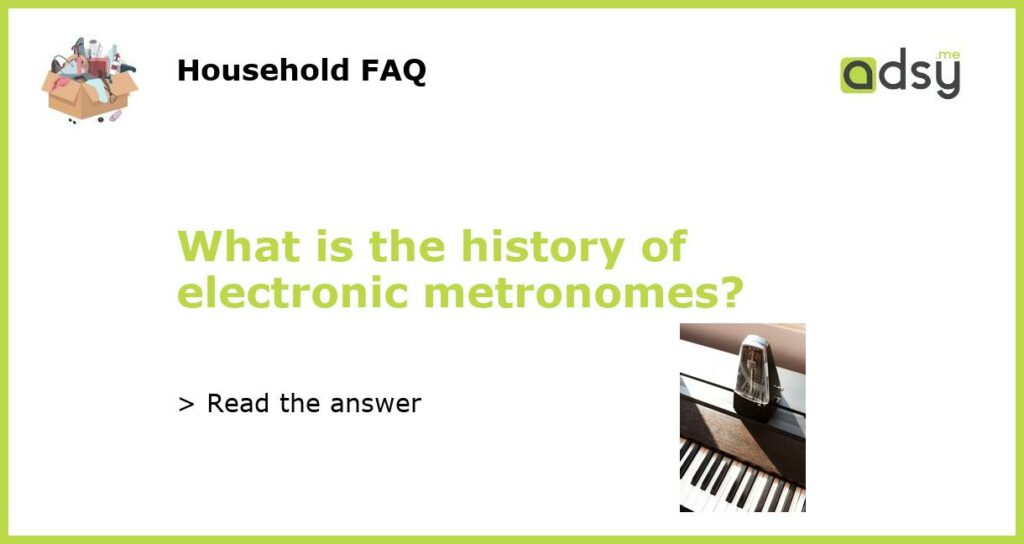The Origin of the Metronome
The first metronome made its appearance in 1816 thanks to the pioneering work of Dietrich Nikolaus Winkel, a German inventor. This mechanical device consisted of an adjustable weight that could be moved up and down the device’s stem, which comprised the “pendulum” element of the metronome. The device was then paired with a clock-like mechanism to generate precise tempo marking.
The Evolution of the Electronic Metronome
The electronic metronome was a natural development, given the limitations of the mechanical device. Electric metronomes existed as early as the 1930s, but they utilized an electric motor with an electromechanical interrupter that made a ticking sound resembling the mechanical metronome.
By the 1970s and 1980s, digital technology opened up new opportunities for building electronic metronomes. These modern metronomes used quartz crystals to generate precise tempos. Instead of producing an audible sound, the electronic metronome could vibrate or flash a light to give the tempo reference.
Application of Electronic Metronomes
Electronic metronomes were readily adapted for use by musicians and continue to be a staple for many performers. These devices feature various tempo settings, rhythm patterns, and visualization tools to help musicians feel the rhythm while playing. They are now commonplace among music students and professionals who use them to study new music or refine their playing.
The Role of Metronomes in Music Education
Metronomes have long been a vital component of music education. They are an essential tool to develop a sense of time and rhythm. Metronomes are particularly beneficial for those studying classical music, as these genres often require precise tempos and can be unforgiving when it comes to timing errors.
Electronic metronomes are especially useful for music students, as they can create a more accurate and reliable timing reference than a human playing the instrument.
The history of electronic metronomes has seen the development of new technologies that allowed for more accurate tempo references and more portable metronomes that could travel with musicians. Today’s electronic metronomes offer a wide range of features that cater to diverse musical genres and contexts. Yet, the evolution of the metronome is not over. Recently, smartphone apps and online metronomes have begun challenging the traditional electronic devices, offering new ways to achieve precision timing in music.






